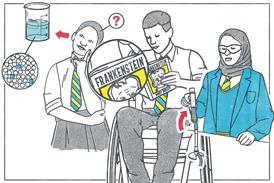How certain phenomena are explained in key undergraduate chemistry texts is the focus of a study by Vicente Talanquer of the University of Arizona

Chemistry teachers are frequently faced with having to provide explanations as to why certain things happen in chemical transformations. These explanations can take two forms: causal explanations, which take into consideration the properties of the reactants and their interactions; and teleological explanations, which describe an object, action, or event that have a particular function. To gain an insight into the role and nature of teleological explanations used in higher education, Vicente Talanquer, of Arizona University, investigated how authors explained certain phenomena in key undergraduate texts.1
Talanquer found that though teleological explanations are used sparsely in chemistry texts they are often associated with important topics. For example, they are used to justify why particles, on an atomic scale, adopt certain configurations or why certain substances react in a particular way.
According to Talanquer, the explanations are linked to a hypothesis or law that relates to the behaviour of the system moving to minimise or maximise some intrinsic property. For example, when explaining the second law of thermodynamics many textbook authors write in terms of the chemical systems having natural 'tendencies' or 'propensities' to proceed in a 'preferred' direction. Such simplifications help students predict what is likely to happen in new situations.
Talanquer's study also showed that in many cases the textbooks provided causal or mechanistic explanations of the same phenomena to provide a deeper understanding of the topic.
References
- V. Talanquer, Int. J. Sci. Educ., 2007, 29 (7), 853.






No comments yet